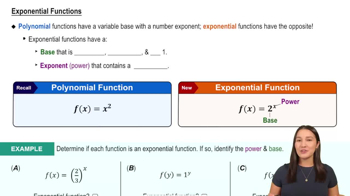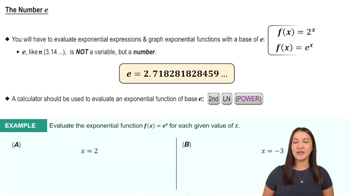Table of contents
- 0. Functions7h 52m
- Introduction to Functions16m
- Piecewise Functions10m
- Properties of Functions9m
- Common Functions1h 8m
- Transformations5m
- Combining Functions27m
- Exponent rules32m
- Exponential Functions28m
- Logarithmic Functions24m
- Properties of Logarithms34m
- Exponential & Logarithmic Equations35m
- Introduction to Trigonometric Functions38m
- Graphs of Trigonometric Functions44m
- Trigonometric Identities47m
- Inverse Trigonometric Functions48m
- 1. Limits and Continuity2h 2m
- 2. Intro to Derivatives1h 33m
- 3. Techniques of Differentiation3h 18m
- 4. Applications of Derivatives2h 38m
- 5. Graphical Applications of Derivatives6h 2m
- 6. Derivatives of Inverse, Exponential, & Logarithmic Functions2h 37m
- 7. Antiderivatives & Indefinite Integrals1h 26m
- 8. Definite Integrals4h 44m
- 9. Graphical Applications of Integrals2h 27m
- 10. Physics Applications of Integrals 2h 22m
4. Applications of Derivatives
Differentials
Problem 121a
Textbook Question
Exponential growth rates
a. For what values of b > 0 does bˣ grow faster than eˣ as x→∞?
 Verified step by step guidance
Verified step by step guidance1
To determine for which values of b > 0 the function bˣ grows faster than eˣ as x approaches infinity, we need to compare the growth rates of these two functions.
Consider the ratio of the two functions: (bˣ)/(eˣ). We want to find the values of b for which this ratio approaches infinity as x approaches infinity.
Rewrite the ratio using properties of exponents: (bˣ)/(eˣ) = (b/e)ˣ.
For (b/e)ˣ to grow faster than eˣ, the base (b/e) must be greater than 1. This is because if the base of an exponential function is greater than 1, the function grows exponentially as x increases.
Therefore, for bˣ to grow faster than eˣ, b/e > 1, which implies b > e. Thus, b must be greater than the mathematical constant e (approximately 2.718).
 Verified video answer for a similar problem:
Verified video answer for a similar problem:This video solution was recommended by our tutors as helpful for the problem above
Video duration:
6mPlay a video:
Was this helpful?
Key Concepts
Here are the essential concepts you must grasp in order to answer the question correctly.
Exponential Functions
Exponential functions are mathematical expressions of the form f(x) = b^x, where b is a positive constant. These functions exhibit rapid growth as x increases, with the base b determining the rate of growth. For example, if b = 2, the function grows faster than linear functions but slower than higher exponential bases.
Recommended video:

Exponential Functions
The Number e
The number e, approximately equal to 2.718, is a fundamental constant in mathematics, particularly in calculus. It serves as the base for natural logarithms and is significant in modeling continuous growth processes. The function e^x is unique because it is the only function that is its own derivative, making it a critical point of comparison for other exponential functions.
Recommended video:

The Number e
Growth Rate Comparison
To compare the growth rates of two exponential functions, we analyze their limits as x approaches infinity. Specifically, we can determine when b^x grows faster than e^x by examining the ratio of the two functions. If the limit of (b^x)/(e^x) approaches infinity as x increases, then b^x grows faster than e^x, which occurs when b > e.
Recommended video:

Intro To Related Rates







